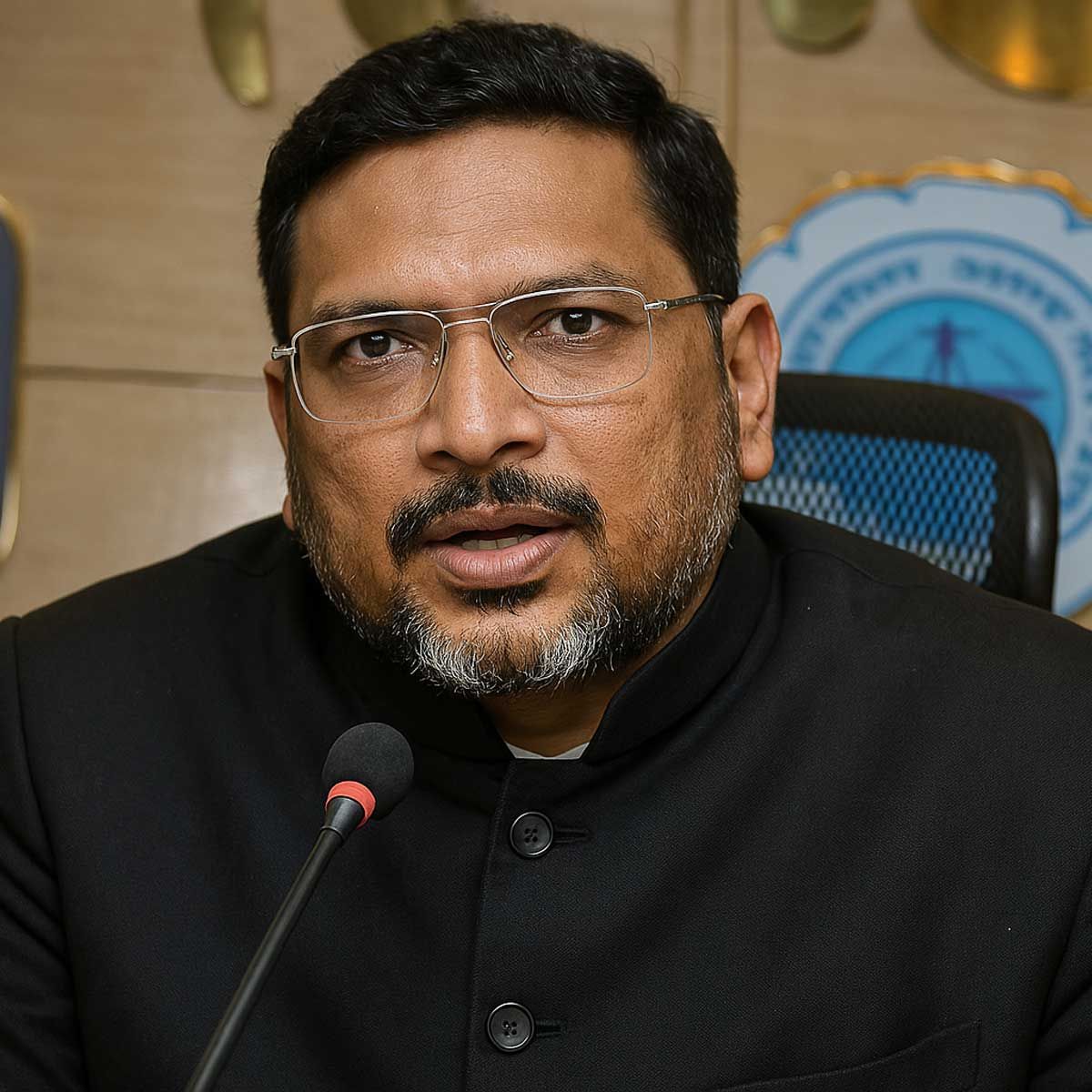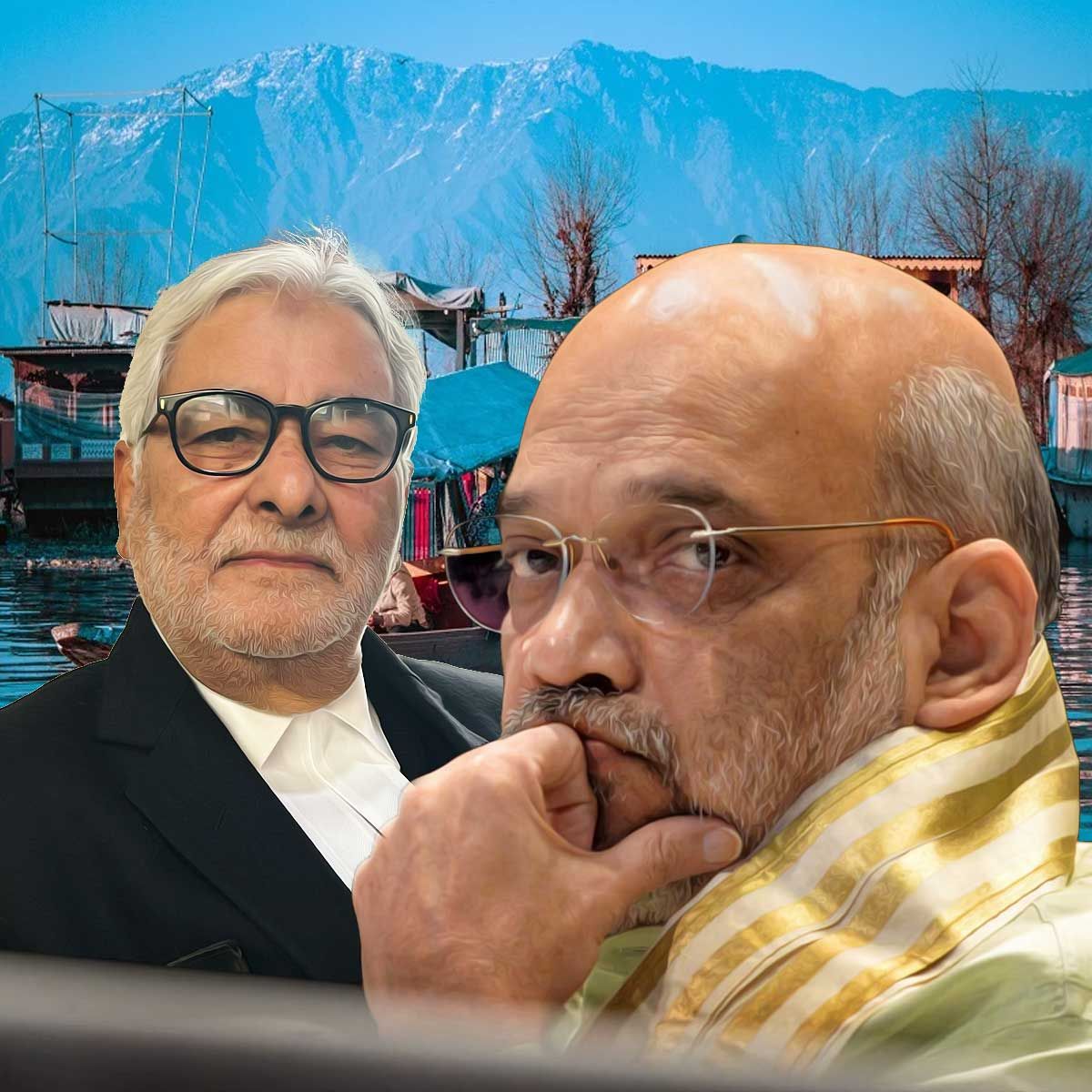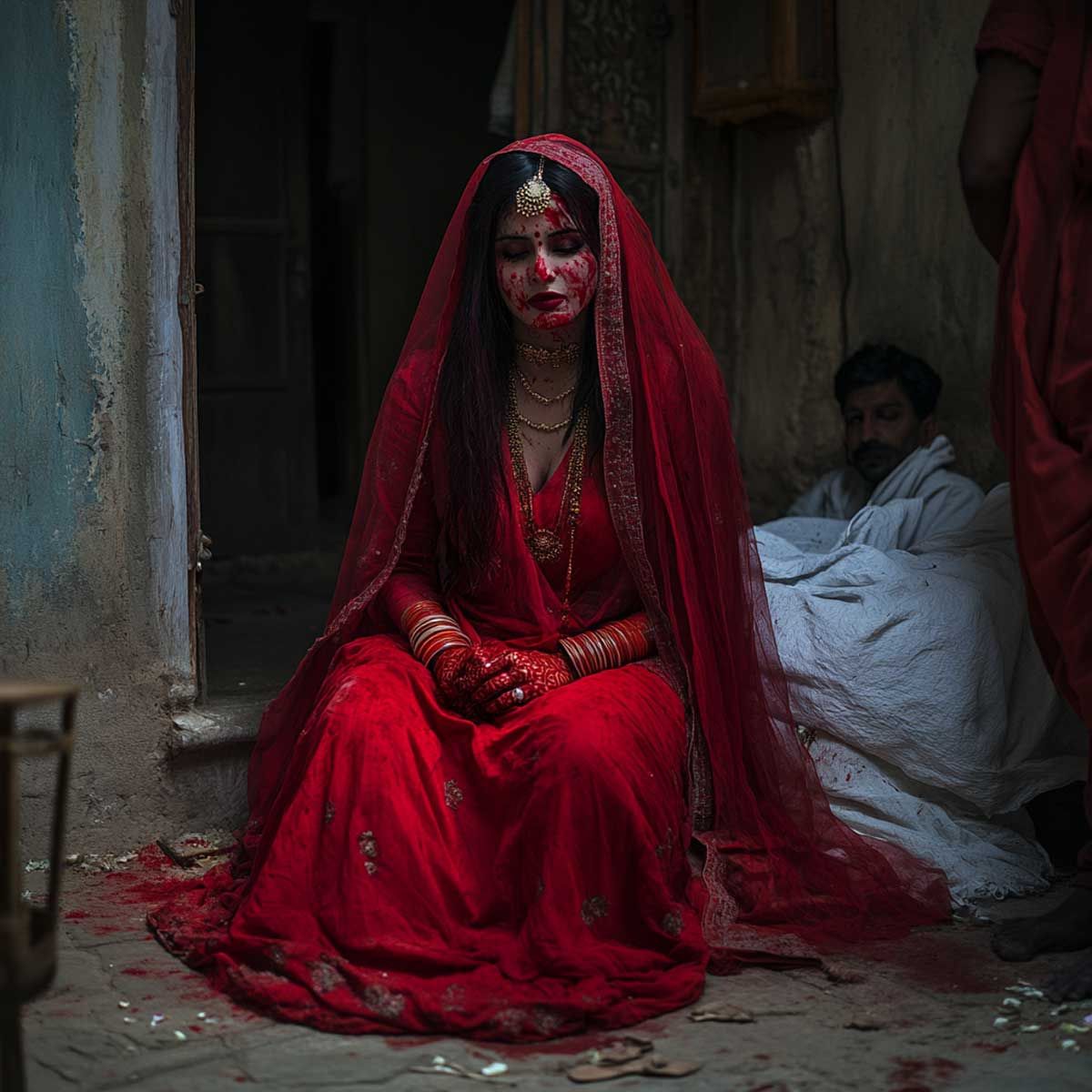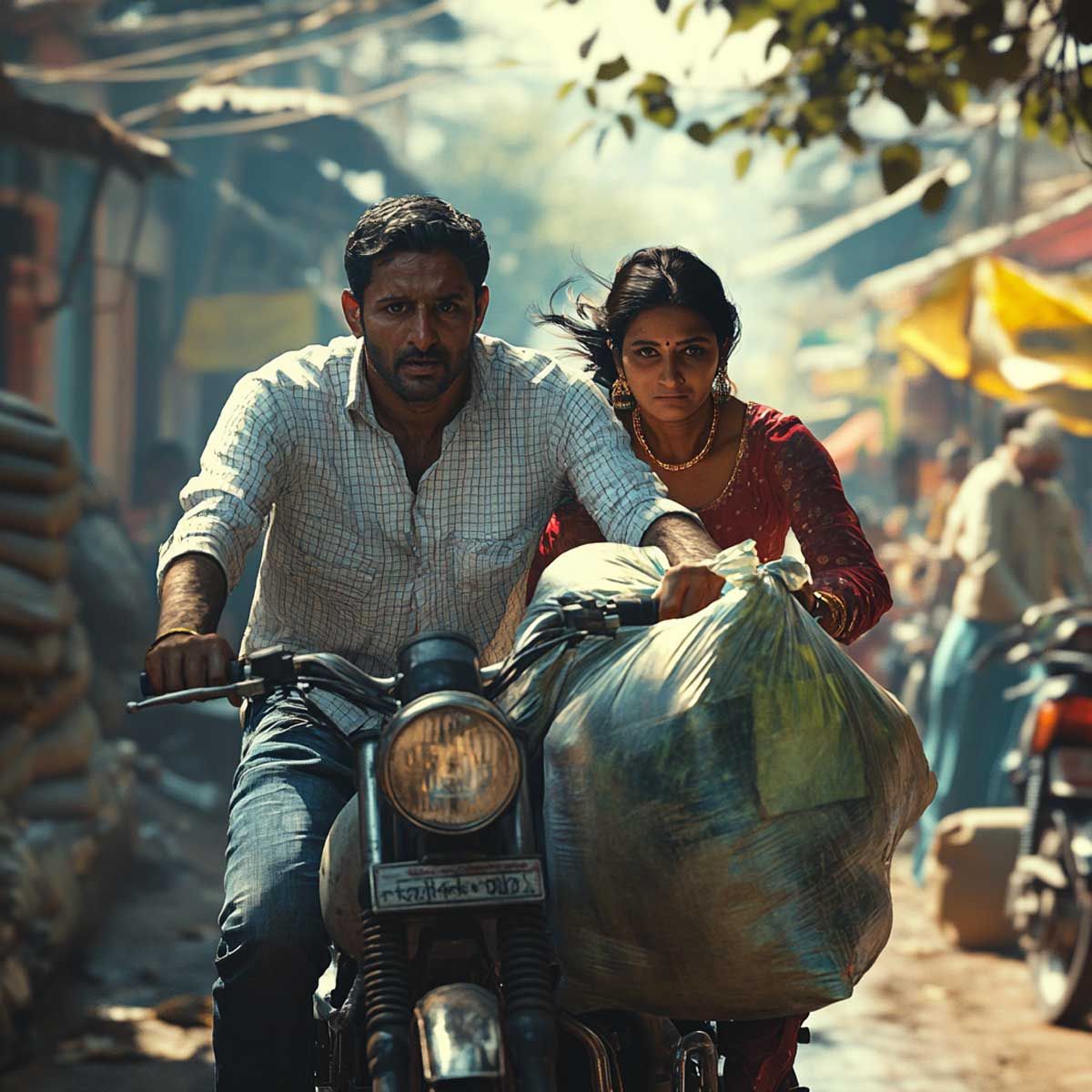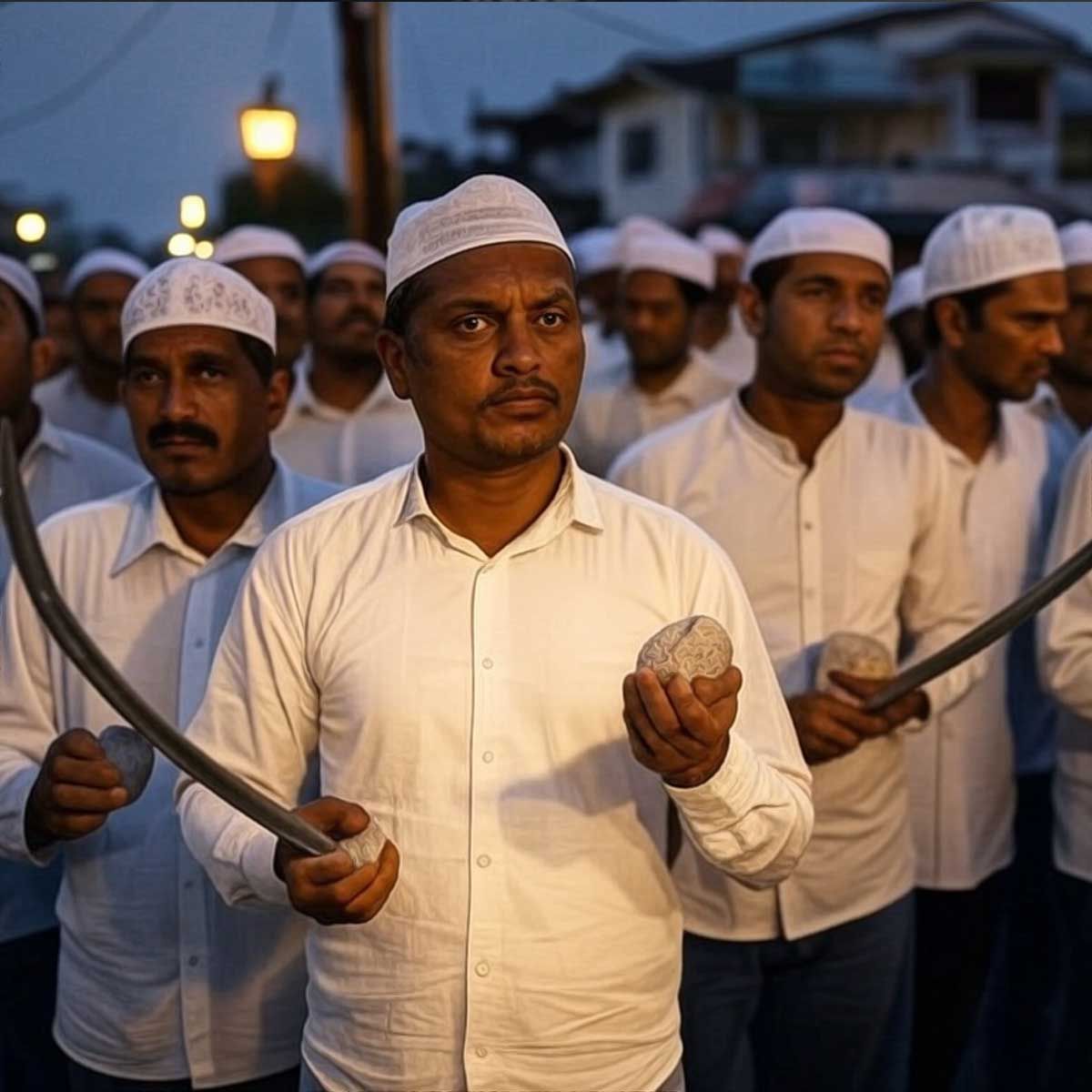More Coverage
Twitter Coverage
Satyaagrah
Written on
Satyaagrah
Written on
Satyaagrah
Written on
Satyaagrah
Written on
Satyaagrah
Written on
JOIN SATYAAGRAH SOCIAL MEDIA
"Who gifted 163-acre Katchatheevu Island to Sri Lanka as a gift, wasn’t that part of Maa Bharati there," PM Narendra Modi tore Congress while replying at the No-Confidence Motion, highlighting DMK and CM Stalin consistent pleas urging its retrieval
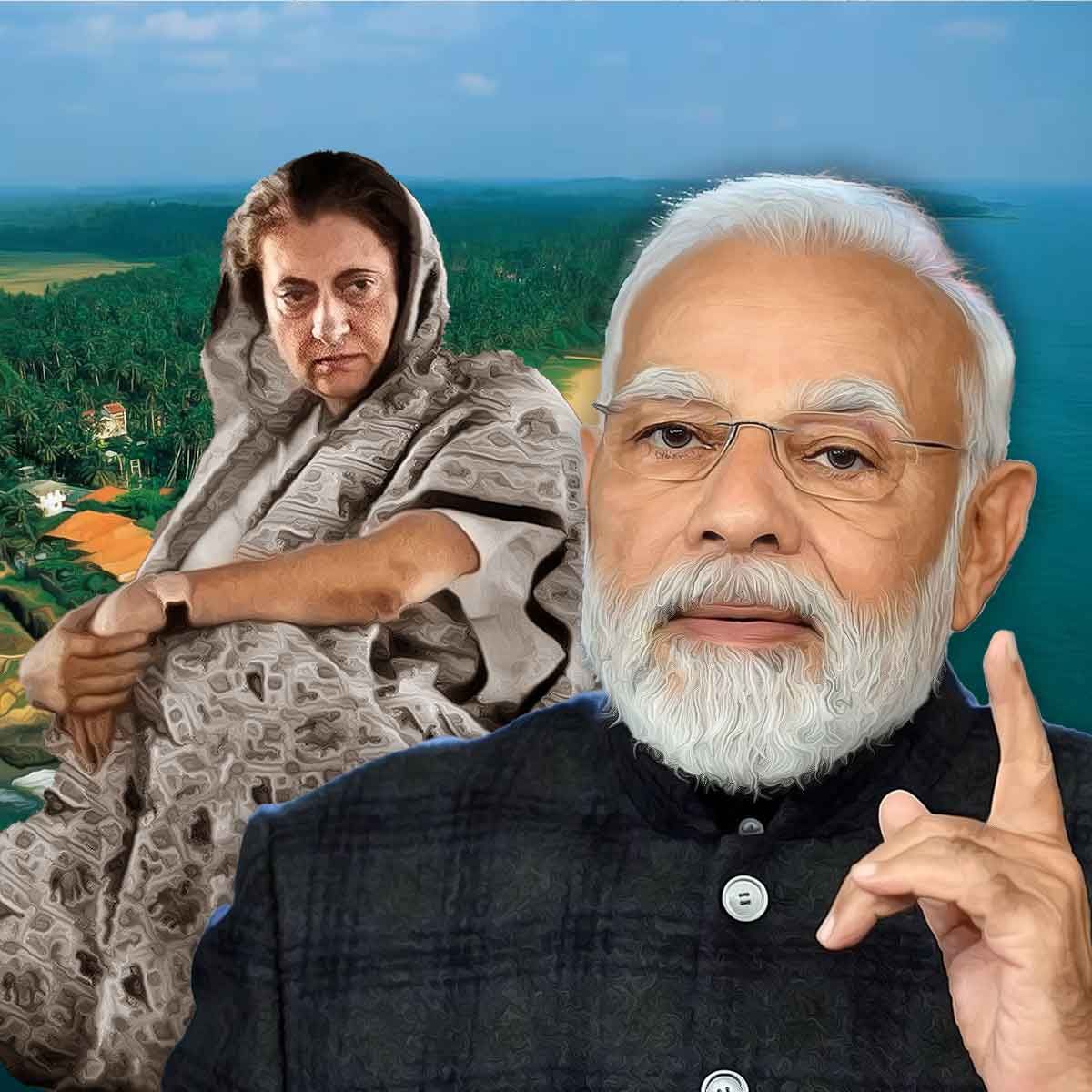
When Prime Minister Narendra Modi took the stage in the Parliament on August 10, during the No Confidence debate, he delved deep into the history of the Katchatheevu Island. Addressing the remark made by Rahul Gandhi, which was later expunged concerning 'Bharat Mata', PM Modi referenced how the Indira Gandhi administration had transferred the island of Katchatheevu to Sri Lanka in 1974, bringing this issue to the fore once again.
|
In his fervent response to the motion, PM Modi didn't just mention the island's giveaway; he questioned the Congress for their decision to do so. Highlighting the longstanding plea of the Dravida Munnetra Kazhagam (DMK), he shared how DMK representatives, including Chief Minister MK Stalin, have been consistently writing to him, urging him to reclaim the island for India.
He provocatively questioned, "Who can tell me about Kachchatheevu? It's a topic that has been glossed over, yet today, I shed light on it. DMK and its leaders have often expressed their concern, emphasizing, 'Modiji, bring back Kachchatheevu to us.' So, when exactly did this island, lying between Tamil Nadu and Sri Lanka, become someone else's possession? Wasn't this land part of our motherland, our Bharat Mata? Yet, it was fragmented and handed over under the stewardship of Smt. Indira Gandhi."
He further added with an undertone of irony, "And now, the very Congress which executed this division speaks of its profound love for India."
Nestled in the Palk Strait, Katchatheevu is an uninhabited island that traces its genesis back to volcanic activities in the 14th century. Positioned strategically between Neduntheevu in Sri Lanka and Rameswaram in India, the island's history is intertwined with colonial-era politics and post-independence territorial disputes.
Administration and its Evolution Over the Years
- The vast 163-acre expanse of Katchatheevu was initially under the joint stewardship of India and Sri Lanka during the British Raj.
- Historically owned by the Raja of Ramnad (which is today's Ramanathapuram in Tamil Nadu), Katchatheevu later transitioned to be an integral part of the Madras Presidency.
- As 1921 dawned, both Sri Lanka (then Ceylon) and India staked their claims on this vital land for fishing rights. This territorial contention remained unresolved for decades.
- Post India's independence, there was a renewed push to settle the pre-independence territorial dispute that was hanging between Ceylon and the British. The outcome? Katchatheevu fell under Sri Lanka's administration.
|
The Brewing Conflict | Over the centuries, the fishermen of both nations had coexisted, fishing amicably in the adjoining waters. The calm waters turned turbulent post the signing of four Maritime Boundary Agreements between 1974-76. These accords delineated the maritime boundaries of the two nations.
- It was in 1974 that Indira Gandhi, the then Prime Minister of India, recognized Katchatheevu as Sri Lanka's territory, a decision solidified under the "Indo-Sri Lankan Maritime Agreement". This agreement was a major step in delineating the maritime boundaries in the Palk Strait.
- In a subsequent 1976 agreement, restrictions were placed on fishermen from both nations, prohibiting them from venturing into each other's exclusive economic zones. The objective behind this was to streamline resource management and strengthen law enforcement in the Palk Strait region.
- Indian fishermen, though barred from fishing near the island, were permitted to visit Katchatheevu for rest, drying nets, and for the annual St. Anthony's festival.
- However, with marine life depleting on the Indian side and fishermen trespassing the Sri Lankan boundaries in search of richer catch zones, tensions escalated. The introduction of modern fishing trolleys further exacerbated the situation, as they started damaging the marine ecosystem.
Delving into Katchatheevu's Rich History | Measuring 1.15 sq km, the uninhabited Katchatheevu Island lies strategically between Rameswaram in India and Neduntheevu (Delft Island) in Sri Lanka. The only significant landmark on the island is the St. Anthony's Church, a place of reverence for both Indians and Sri Lankans. Notably, Indians are exempted from visa requirements to visit the church for its annual festival.
The island's historical archives trace its roots back to the kingdom of Jaffna during the early medieval period. However, by the 17th century, its governance shifted under the territory of the Raja of Ramnad.
With the onset of British colonization, Katchatheevu was perceived as a part of the Madras Presidency. However, Ceylon (now Sri Lanka) didn't shy away from laying its claims over the island. Post-independence, after much negotiation, India officially transferred the island to Sri Lanka in 1974 through a bilateral agreement.
|
Why is Katchatheevu Vital for Indian Fishermen?
Katchatheevu holds immense importance for Indian fishermen due to its rich fishing grounds. If the island were under Indian jurisdiction, it would grant fishermen an additional seven to ten nautical miles, significantly diminishing the risk of arrests by the Sri Lankan Navy.
When apprehended by the Sri Lankan Navy, Indian fishermen face substantial financial losses as their boats are often confiscated. It's noteworthy that many of these arrests took place in the waters between Katchatheevu and Neduntheevu.
It's essential to understand that not all fishermen deliberately venture into Sri Lankan territories. Oftentimes, unclear boundaries combined with factors like engine malfunctions or unfavorable weather conditions inadvertently push them into neighboring waters.
Moreover, Indian fishermen feel an increasing need to explore these waters due to declining fish stocks on their side of the boundary.
Dissecting the 1974 and 1976 Agreements | In 1974, efforts were made to finalize the maritime boundaries in the Palk Strait. As part of the resolution, the ‘Indo-Sri Lankan Maritime agreement’ was forged. Under this agreement, India's then Prime Minister, Indira Gandhi, handed over Katchatheevu to Sri Lanka. She believed that relinquishing the island, which seemingly had limited strategic importance, would fortify India's relationship with its southern neighbor.
Despite the transfer of the island, the agreement still allowed Indian fishermen to access Katchatheevu. However, the specifics regarding fishing rights remained ambiguous. Sri Lanka's interpretation limited Indian fishermen's activities on Katchatheevu to resting, net drying, and visiting the Catholic shrine — all without the need for a visa.
Complicating matters further was the 1976 agreement, signed amidst India's Emergency era. This agreement prohibited both nations from fishing within each other's Exclusive Economic Zones (EEZs). Given Katchatheevu's position on the cusp of both countries' EEZs, this created additional uncertainty around fishing rights.
In essence, while attempts were made to demarcate territories and establish clear boundaries, the ambiguity surrounding fishing rights has continually fueled tensions between India and Sri Lanka over the years.
Fishing and maritime boundaries – two essential elements that both unite and divide nations. When it comes to India and Sri Lanka, these waters have tales of their own. To understand these better, let's delve into the intricate agreements the two nations have formed over the years.
|
The 1974 Agreement: Drawing Lines in the Waters
Article 4: At its core, this article lays down a fundamental principle. Imagine a huge, invisible line drawn in the waters, dividing two vast stretches. On either side of this line, the respective country has complete authority. They get to call the shots on their waters, islands, underwater land masses (known as the continental shelf), and even the soil beneath these waters. This might sound like simple geography, but it's the bedrock of how countries interact with the water bodies they share.
Article 5: Now, this is where things get interesting. Despite Article 4 and its clear boundaries, Indian fishermen and those on religious pilgrimages have a special mention. They are allowed to visit Kachchativu, an island that might be a point of contention, without the need to fill out lengthy visa forms or show travel documents to Sri Lankan officials. It's a bit like a hall pass, allowing them to venture there as they traditionally did.
Article 6: Ships and boats aren't bound by the same rules as humans. The vessels from India and Sri Lanka have a unique understanding. They can enjoy rights in each other's waters, much like they always have. A sense of shared history and tradition is echoed in this article.
When 2008 rolled around, Sri Lanka decided to put their perspective forward regarding these articles. Rohitha Bogollagama, the then Foreign Minister of Sri Lanka, stood before their parliament and stated a few key points. According to him, the 1974 Agreement, especially when looking at the Palk Strait and Palk Bay region, highlighted Sri Lanka’s dominion over the island of Kachchativu. But there's a twist. This dominion was mainly about ships navigating these waters, not about the fishermen themselves. He further clarified that Indian pilgrims, under Article 5, could attend the annual church feast, and the fishermen had the rights to dry their nets – but that was it. Fishing was a whole different ball game. The waters, according to these combined articles, weren't a playground for Indian fishermen.
The 1976 Agreement: New Lines, New Understandings | After the discussions of 1974, the two nations came back to the table in 1976. This time, they were looking at the bigger picture, considering the Bay of Bengal and the Gulf of Mannar.
- Article 5 of the 1976 Agreement:
- Just like the previous agreement, each country was given sovereignty. This meant they had complete control over their historic waters, the seas that touch their coastlines, and the islands sprinkled within their defined areas.
- But it wasn't just about the surface. Each country was given rights to the continental shelf and the Exclusive Economic Zone (EEZ). Now, these might sound like fancy terms, but they're simply about the resources. Everything from fish to underwater minerals, within their boundary, was theirs to use.
- Lastly, every ship needs to know where it's going and how it's getting there. So, both countries agreed to respect each other's rights to navigate. This had to align with their own laws and the universal rules that govern the seas.
Bogollagama Speaks | When it comes to fishing in the waters around Katchatheevu, clarity came from an unexpected source - Bogollagama, a senior figure in the Sri Lankan administrative setup. He pointed towards an 'Exchange of Letters' with India's Foreign Secretary. The crux? Both Indian and Sri Lankan fishermen had to stay in their waters unless given special permission.
He laid it out explicitly stating, "Fishing vessels and fishermen of India shall not engage in fishing in the historic waters, the territorial sea and the EEZ of Sri Lanka nor shall the fishing vessels and fishermen of Sri Lanka engage in fishing in the historic waters, the territorial sea and the EEZ of India, without the express permission of Sri Lanka or India, as the case may be.”
The island's location is pivotal, sitting right where the Exclusive Economic Zones (EEZs) of both countries meet, sparking debates over fishing rights. It shed light on the fact that during the fierce battles against LTTE, Indian fishermen often strayed into Sri Lankan waters. Many used large trawling boats. This wasn’t a simple act of crossing boundaries; it led to significant problems like overfishing and, in some cases, ruining the nets and boats of Sri Lankan local fishermen.
No wonder Sri Lankan fishermen weren't pleased. And as if to add fuel to the fire, after the war against LTTE came to a halt, the Sri Lankan Navy, with a newfound zeal, patrolled these waters, arresting many Indian fishermen in the process.
Tamil Nadu's Political Stance | When we shift our gaze to Tamil Nadu's political landscape, the island's significance becomes even more evident. Two political giants, DMK and AIADMK, share a common sentiment: India should reclaim Katchatheevu.
J Jayalalithaa, Tamil Nadu's former chief minister, didn't just voice her concerns; she took tangible actions. She approached the Supreme Court in 2012, underscoring the controversial decision of Indira Gandhi's regime to hand over the island without even discussing it with the state. This handover's legality has been a topic of debate since it didn’t pass through the Parliament. And it's not just these parties. The Tamil Nadu faction of the BJP echoes similar sentiments.
Zooming Into Tamil Nadu’s Perspective
Historically, Katchatheevu was not just a piece of land; it symbolized Tamil pride and tradition. When the island was "given away" to Sri Lanka, it wasn't done quietly. Tamil Nadu was in uproar, protesting against Indira Gandhi's unilateral move. They rooted their arguments in history, speaking of the Ramnad zamindari's age-old dominion over the island and the age-old fishing rights of the Tamil fishermen.
Post the harrowing events of the Sri Lankan Civil War in 1991, Tamil Nadu's Assembly made loud calls for the island’s return and the restoration of Tamil fishermen's rights. Since then, Katchatheevu has been a recurring theme in Tamil politics.
The late AIADMK leader, J Jayalalitha, in 2008, stressed in her petition that the 1974 agreement to cede Katchatheevu needed a constitutional amendment. She championed the cause of the fishermen, arguing that their traditional rights and means of living were severely affected.
Yet, the central government's stance has barely budged. The underlying argument? The island was never truly India's as its status had always been disputed.
India's Official Stand | India's top brass has been quite clear about its position. The government emphasized that Katchatheevu was never truly 'given away' because it was always a matter of contention. Attorney General Mukul Rohatgi in 2014 had a stark reality to share, stating, “Katchatheevu went to Sri Lanka by an agreement in 1974… How can it be taken back today? If you want Katchatheevu back, you will have to go to war to get it back.”
Towards a Solution | Finding a way out seems tough, but suggestions have come forth. Some propose taking the island on lease or advocating joint management of the Palk Bay fishing area. Another solution could be to motivate Indian fishermen to explore the vast Bay of Bengal for deep-sea fishing.
In conclusion, the Katchatheevu dispute isn't just about an island; it's a blend of history, rights, politics, and the livelihoods of countless fishermen. While answers might not be immediate, it's a dialogue that India and Sri Lanka must continue, with understanding and respect at its core. The waters between India and Sri Lanka have witnessed centuries of shared history, culture, and sometimes disagreements. These articles and agreements, while complex, aim to simplify these age-old connections, ensuring both nations sail smoothly into the future.
 Support Us
Support Us
Satyagraha was born from the heart of our land, with an undying aim to unveil the true essence of Bharat. It seeks to illuminate the hidden tales of our valiant freedom fighters and the rich chronicles that haven't yet sung their complete melody in the mainstream.
While platforms like NDTV and 'The Wire' effortlessly garner funds under the banner of safeguarding democracy, we at Satyagraha walk a different path. Our strength and resonance come from you. In this journey to weave a stronger Bharat, every little contribution amplifies our voice. Let's come together, contribute as you can, and champion the true spirit of our nation.
 |  |  |
| ICICI Bank of Satyaagrah | Razorpay Bank of Satyaagrah | PayPal Bank of Satyaagrah - For International Payments |
If all above doesn't work, then try the LINK below:
Please share the article on other platforms
DISCLAIMER: The author is solely responsible for the views expressed in this article. The author carries the responsibility for citing and/or licensing of images utilized within the text. The website also frequently uses non-commercial images for representational purposes only in line with the article. We are not responsible for the authenticity of such images. If some images have a copyright issue, we request the person/entity to contact us at This email address is being protected from spambots. You need JavaScript enabled to view it. and we will take the necessary actions to resolve the issue.
Related Articles
- Gujaratis are agitated and are taking PM Modi’s security breach in Congress-ruled Punjab personally: In their hearts, Modi is still ‘their man’
- How Political ambitions of the Congress has silenced contributions of uncountable freedom fighters
- Biggest Secret Reveal - How ties between Indra Gandhi and KGB made India a puppet of USSR during the Cold War
- During ‘Kheti Bachao Yatra’ in Kurukshetra Shehjada Gandhi claimed of throwing China out from Indian Territory ‘in 15 minutes’: From Nehru’s Himalayan blunder to UPA’s silence as China took over Indian land in Ladakh
- How Communists betrayed India - 100 Years of Russian Revolution
- Retd Commander VK Jaitly admits that he was a witness to Rajiv and Sonia Gandhi using INS Viraat to vacation on Lakshwadeep
- On 16th Aug 1946, during Ramzan's 18th day, Direct Action Day aimed to provoke Muslims by mirroring Prophet Muhammad's victory at Badr, Gopal 'Patha', the Lion of Bengal, heroically saved Bengali Hindus & Calcutta from a planned genocide, altering history
- Congress leader spreads vaccine hesitancy again, this time claims newborn calves are slaughtered for their serum. Here is the truth
- The untold story of Maharashtrian Brahmin genocide committed by Congress after Gandhi’s assassination in 1948
- Calcutta Quran Petition: A petition to ban the Quran altogether was filed 36 years ago, even before Waseem Rizvi petitioned for removing 26 verses from Quran
- Depth of Soviet penetration in Indian media is exposed through declassified CIA document from 2011
- Was Italian family of Sonia Gandhi involved in the Bofors scam: Papers long buried, questions that were never asked
- Golden time of Nehru dynasty, when assets of country like Indian Navy were used for Vacation and to 'pay respect' to Edwina Mountbatten's death
- "PM Modi mentions the 1966 bombing of Mizoram": When Indira Gandhi had ordered the IAF to carry out an aerial attack in Aizawl and its aftereffects that still reverberate in India's history, capturing Mizoram's tumultuous journey through adversity
- Mysterious death of the tallest leader Syama Prasad Mookerjee in Kashmir: He was strong critic of Nehru and founder of Bharatiya Jana Sangh (BJP today)















